“They have heard so many times that they are unimportant that most actually believe it”, Carlos Quintero explains to me. He is talking about residents of areas like Los Reyes in the far East of Mexico City, where poverty rates are high and transportation to employment takes many people as much as three hours (one-way). Carlos is the founder and director of ENSAMBLE, a Mexican NGO dedicated to foster social movements, build leadership and organize communities to fight social exclusion and isolation in the urban periphery of Mexico City. The ideas behind the work of ENSAMBLE are relevant for marginalised urban areas around the world. Investing in community and in togetherness can change these areas, and it also contributes towards SDG 11 by creating more inclusive and participatory cities.
Setting the Scene
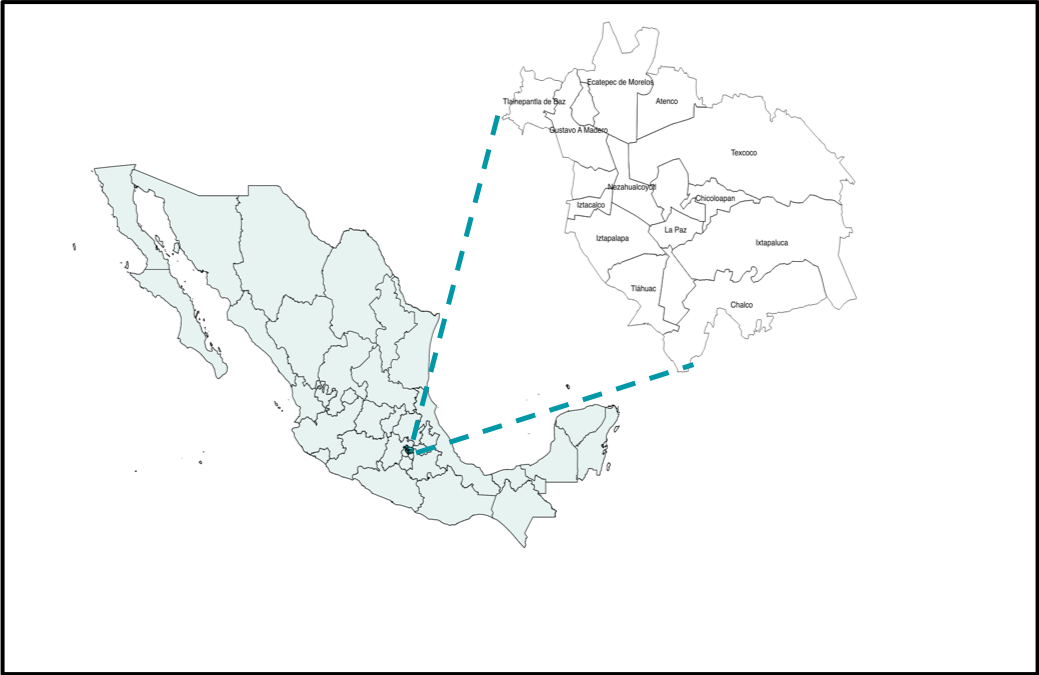
ENSAMBLE believes that social exclusion and the isolation of suburbs / outskirts are a political problem that is actually dis-empowering people, while at the same time strengthening inequality.
Currently, they are working on a project called “Los 500 por La Paz” – 500 people for La Paz. The focus lies on organising the community, so that they themselves can combat social, political and economic injustice. Local leadership is the goal.
Lack of employment opportunities, high delinquency rates and failing basic services in combination with a dangerous indifference of politicians are leading to exclusion in Mexico City’s large Eastern area. But apart from that, there are deeper reasons for the exclusion:
As a postcolonial city, Mexico City still bears many traces of the Spanish “conquista”. When the Spanish arrived at the centre of the Mexica Empire called Technochtitlán, they found a magnificent city on top of an island in the middle of the huge Texcoco Lake. Hernan Cortés quickly conquered this metropolis thanks to his men, his weapons and an element of surprise, which also included diseases that killed many Aztec warriors. The central square, Zócalo, was established by the Spanish on top of the main pyramid that the Mexicas had built. All the areas behind the Zócalo and in its East, which back then were designated to the “indios”, are largely neglected until today, including the East of the city.
Psychologically, this plays a big role, since the lack of data and history makes inhabitants of Mexico City’s East and the surrounding suburbs feel that they are less “worthy” of having their own history. Therefore, ENSAMBLE provides this history through thorough and painstaking research in libraries, archives and any other source they can find. They then hand this information over to community leaders to spread it in the community. In this first step, the community comes together and a feeling of “belonging” is created, which is crucial for further action in developing a community.
So, what does ENSAMBLE do to tackle this challenge?
The ENSAMBLE Method: Using Narratives
ENSAMBLE uses its very own method that focuses heavily on narratives and on learning from the communities, rather than imposing models. They are teaching community groups how to come together and develop their own sense of leadership by firstly listening to other community members.
In order to be accepted by the community they want to work with, ENSAMBLE first of all compiles a heavy folder full of research. They tell stories about the area, based on the little information that is available for Mexico City’s East, and ask residents to complete this story. Thus, the story-telling process starts.
After this first step, ENSAMBLE gives trainings to marginalised communities. Any interested community member can participate and learn about organisation processes and leadership. It turns out that most participants are women, who seem to care more for their neighbourhood. They are all working, mostly as self-employed workers or in informal conditions, but somehow, they make time for the weekly meetings. These consist of even more storytelling and practical organizing tools. With the help of an ENSAMBLE staff member, groups like “Los 500” manage to bring some structure to their many stories. They identify common challenge and think of solutions together.
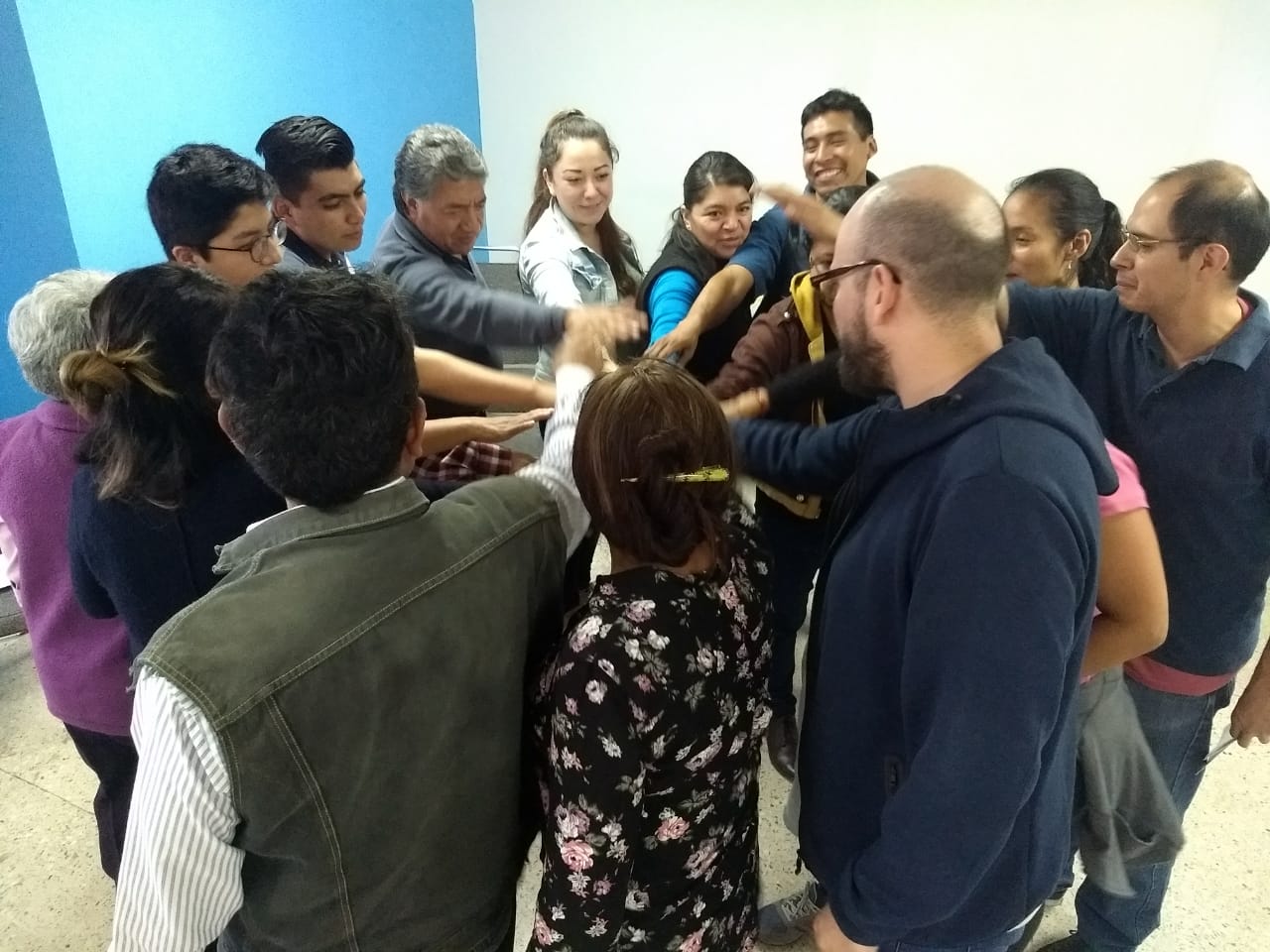
The important contribution of ENSAMBLE here is helping people find hope and develop alternatives for themselves. Other than that, the NGO quickly takes a back seat and lets the community members speak. ENSAMBLE team members might facilitate discussions and provide additional trainings where necessary, but otherwise, the goal lies on sustainability and on letting communities take their fate in their own hands.
The last step in ENSAMBLE’s way of working consists in political leverage. The joint force of the community in combination with data, results from recent efforts and social influence will hopefully move local politicians to invest more in their own areas. A first start is applying for funding and for in-kind donations such as trees. Importantly, the political leverage is not only used with politicians, but also with other organisations and enterprises.
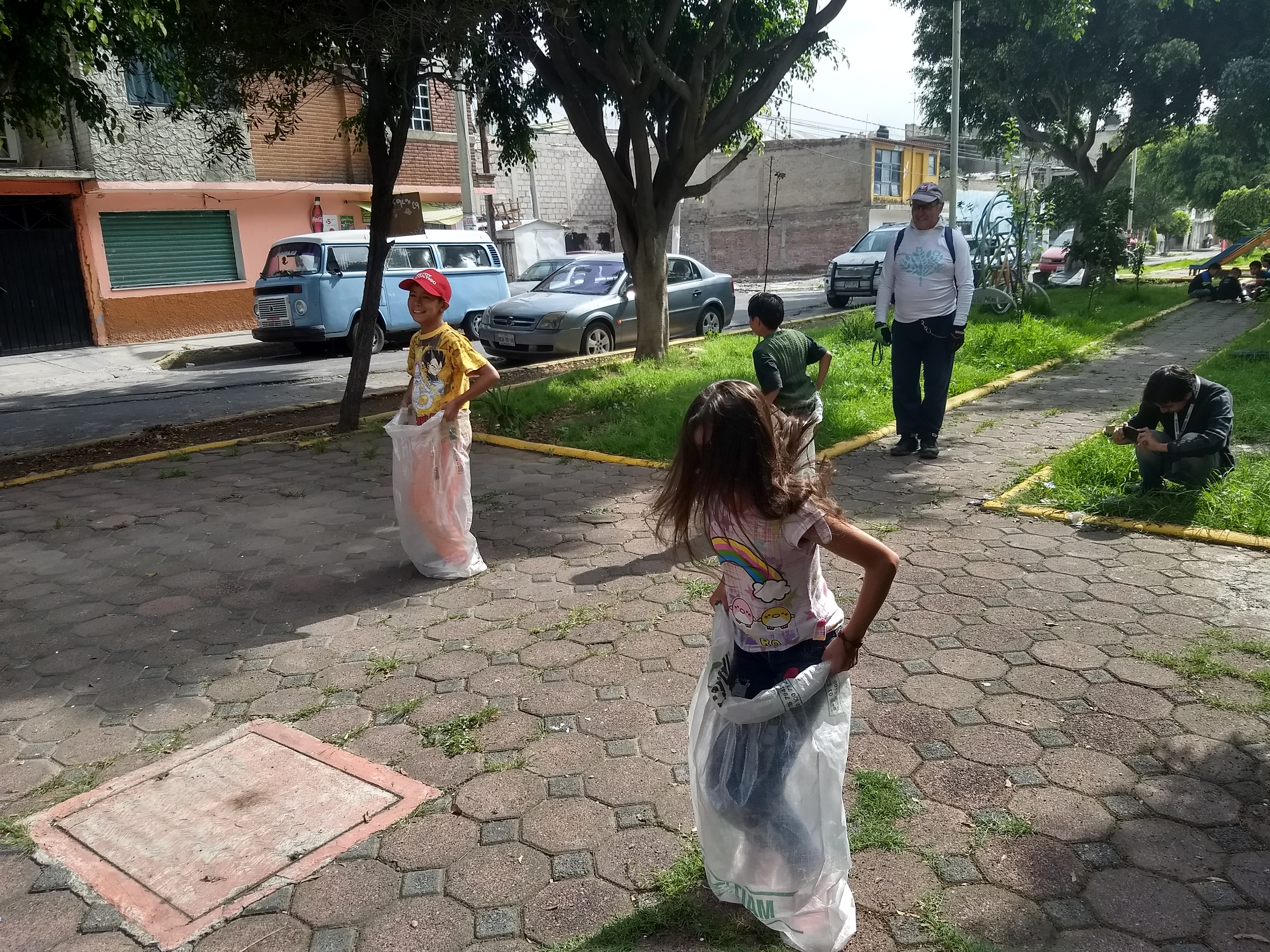
Caption: Importantly, the 500 por La Paz group appropriates public spaces, which – as Carlos puts it – “have always been theirs, anyway”.
A Visit to La Paz / Los Reyes
At first, neighbours in La Paz were very sceptical when invited to ENSAMBLE’s workshops. It was also a big challenge timewise to make the meetings work. However, with the first two or three attendants, the group grew rapidly. Despite the lacking connections within the neighbourhood, some individuals managed to spread the word. By now, ENSAMBLE is already working on capacitating more and more people from La Paz. They speak of “encouraging” instead of “empowering” the residents, since it is an important point that La Paz residents already have the power they need to change their living conditions.
In the weekly meeting I attend in June 2019, the core group of the 500 (about 15 people) gets together. They discuss how to deal with requests from neighbours and how to learn planting trees, since they recently applied successfully for a grant for 100 trees.
Sandra, the community manager from ENSAMBLE, is great at explaining complex concepts like capacitation in everyday terms, considering that not every member of the 500 group has gone to university or even completed their basic education. During the meeting, every member of the group participates, speaks up, has some ideas and generally shows their enthusiasm for the project and for the whole neighbourhood. “I want to contribute my little grain of sand”, says Itzé, one of the ladies of La Paz. She is mostly concerned about doing a proper elevator pitch of the 500 project so she can explain it to her neighbours. These are the practical issues that ENSAMBLE can help with.
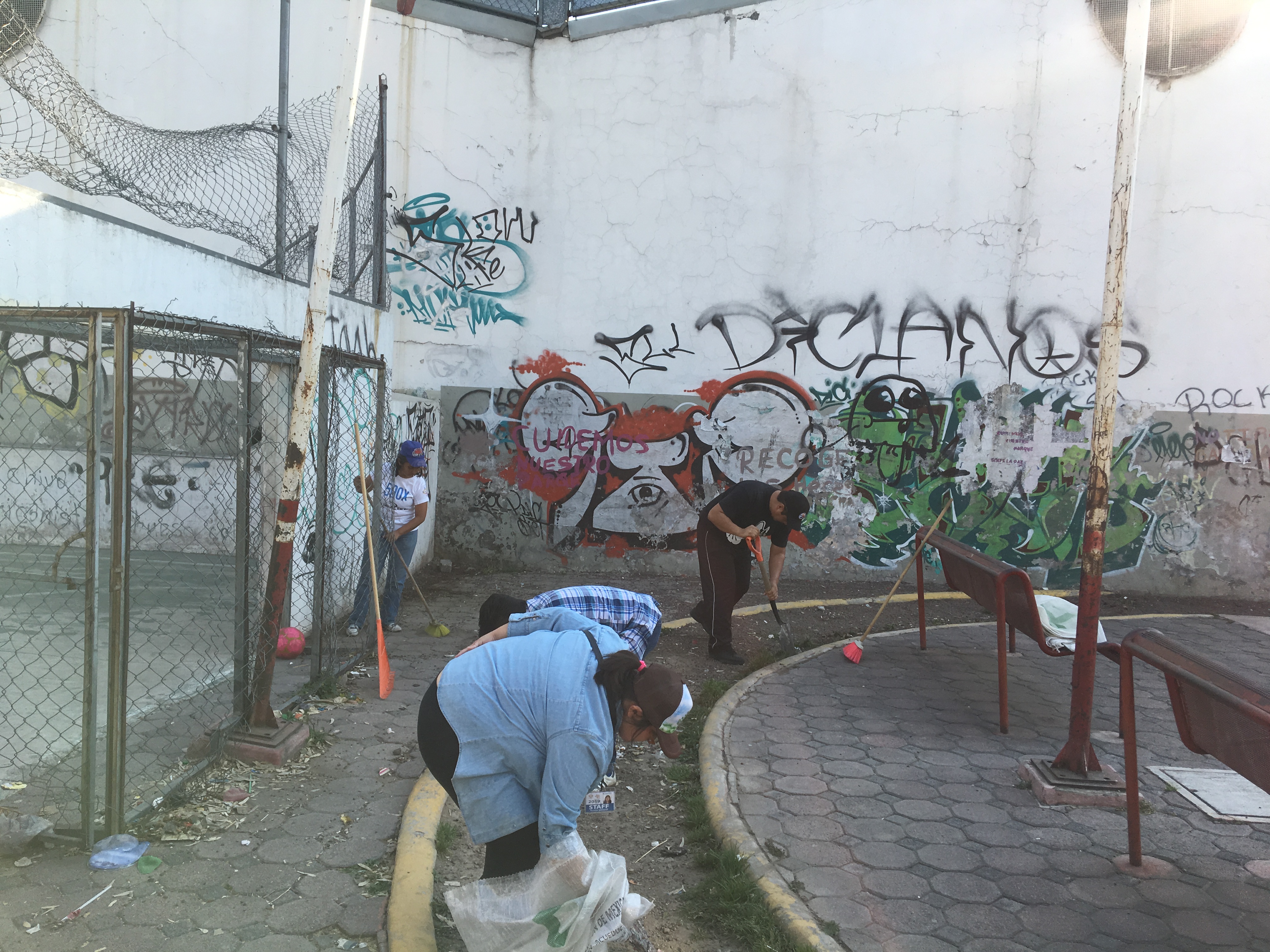
The visit ends with a trip to San Isidro, which is even further away from Mexico City’s centre than Los Reyes. The people who live here tend to work as cleaners in Los Reyes or other households. It is the first time I see unpaved streets and actual cardboard houses in Mexico City. We visit Angeles, a 48-year old lady who attended one of ENSAMBLE’s capacity building trainings a few months ago. She has since started a women’s group together with a few friends, and they are struggling to rally their neighbours in order to demand better living conditions: clean water, paved streets and public safety.
The important thing, Sandra tells me, is to “place a bet” on the people living in areas such as La Paz and San Isidro. This is a great way to turn exclusion into inclusion and turn strangers into neighbours. People in Mexico tend to be very used to someone else solving their problems. They now need to take ownership of these challenges, which will give them enough leverage to challenge politics. A lot of small activities such as cleaning up streets, attending self-esteem workshops, getting together with neighbours to create a safer area or planting trees in one of the few parks are already making a difference in la Paz. Neighbours are gaining new perspectives and are starting to take responsibility for their surroundings. They do not want to leave where they live, but instead hope to create better living conditions for the next generation.
The Results So Far
So far, ENSAMBLE is working with 70% women who start groups like Angeles, or who are trying to start neighbourhood movements. As an NGO, ENSAMBLE is working on making itself useless as quickly as possible. They are fostering people’s passion to care for their neighbourhood and are very clear about the fact that this is hard work, not a magical solution. By supporting communities, who then go on to found groups or start businesses, ENSAMBLE is doing truly sustainable work in the hope that they soon won’t be needed anymore.
Data analysis shows that people in La Paz are now much more confident and ready to confront local government wherever necessary. Neighbourhood relations are growing, to the point that people in San Isidro, which is about 15 minutes or one metro station away, have already heard of “Los 500”. There is growing request for ENSAMBLE’s workshops, which many people can even use in their personal life. Until today, 914 people of all ages in La Paz and San Isidro have participated in ENSAMBLE’s workshops.
By improving public spaces and inviting people of every age to the meetings, many young people, who normally would go straight to drugs or gangs in La Paz, are seeing an alternative way of life. Even a 12-year-old boy attends the meetings, where he feels that his ideas are valued, and people are listening to him. Importantly, ENSAMBLE is focusing on giving an impulse. What the neighbours who attend the trainings are doing with these ideas is up to them. Examples like the 500 group or the women’s group in San Isidro show that there is a lot of potential to this idea.
While stronger relations between neighbours alone will not be able tackle the lack of political will, there is now at least an alternative in La Paz. Neighbours self-organise very efficiently and create a sense of “We can get this done”. Community is playing an increasingly important role in La Paz. Until a few years ago, 7 out of 10 neighbours in Mexico have never been part of any group or association, according to the Mexican Institute of Youth. To the first training organised by ENSAMBLE, only 2 people showed up. They quickly developed the goal of having a group of 500 neighbours who would help to reconstruct the neighbourhood after the shattering earthquake of September 2017. This is how “Los 500 por La Paz” was born. Two people quickly became six, six became 30. The group of 500 is today comprised of a broad mix of people, but also geographically diverse.
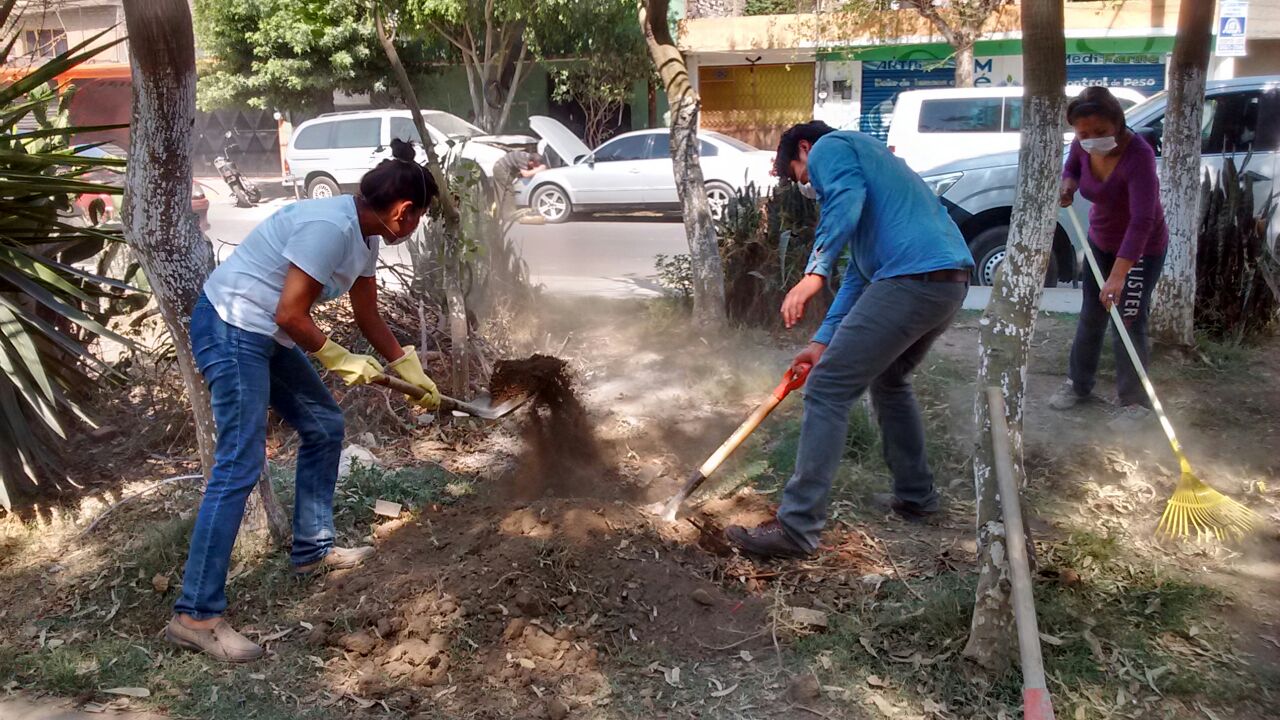
Another big challenge lies in interesting the residents in this “strange” methodology. But the visit to La Paz revealed that as long as you can convince a few neighbours of the potential they have, the first step is done. Carlos even believes that every community in Mexico has at least 500 people who will fight to bring down walls, to learn from neighbours and to improve their area. In order to gain trust, it is crucial to stress that ENSAMBLE is not doing any magical work. “We are only showing people that they themselves can be the solution and take control of what is theirs by building community”, Sandra says.
But encouraging the community to grow means to change “the self-perception and thereby the actions of people”, according to Sandra. ENSAMBLE is working on making them understand that and why they are a community, using simple, but very efficient methods such as story-telling. This is a crucial first step in any further action, which is perhaps too often neglected in other development projects. In a country like Mexico, where people are used to autocratic rule and disinterested politicians, it is even more important to build on the power of community – to encourage instead of empower!
Working on SDG 11 as a Community
But one of the biggest successes of ENSAMBLE is something you feel rather than count: The fact that people are not indifferent towards the fate of their own neighbourhood anymore. Rather than fighting for themselves, they are ready to come together as a community, thanks to encouragement from ENSAMBLE. After all, many of them have similar problems and can easily help each other. All over the world, marginalised communities face this situation of neglect. Of course, there is a big need for political and planning intervention in order to provide better employment opportunities, better infrastructure and to recognise the value of informal work. But until that becomes a reality, the people in Los Reyes, in La Paz and other parts of the East of Mexico City are largely left to fend for themselves. This is where NGOs like ENSAMBLE step in to encourage them to retake their power as a neighbourhood. Together – ensemble.
Thank you to Carlos, Diana, Paola, Sandra and the local communities for helping with this article and allowing me to write it in the first place!
More articles focused on Mexico City:
SuSana Distancia: The Mexican Superhero Fighting the Spread of Coronavirus
#sdg11inmexicocity: Connecting the Outskirts to City Centre with Cable Cars

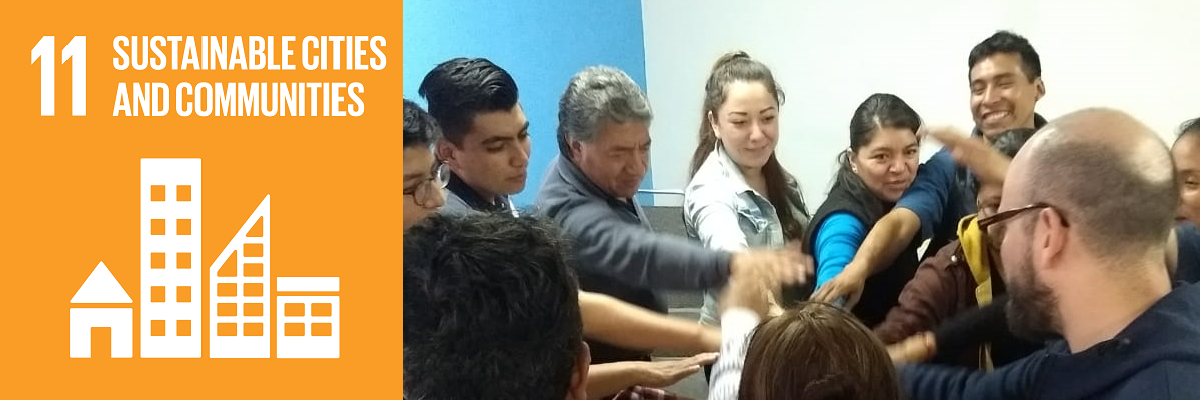





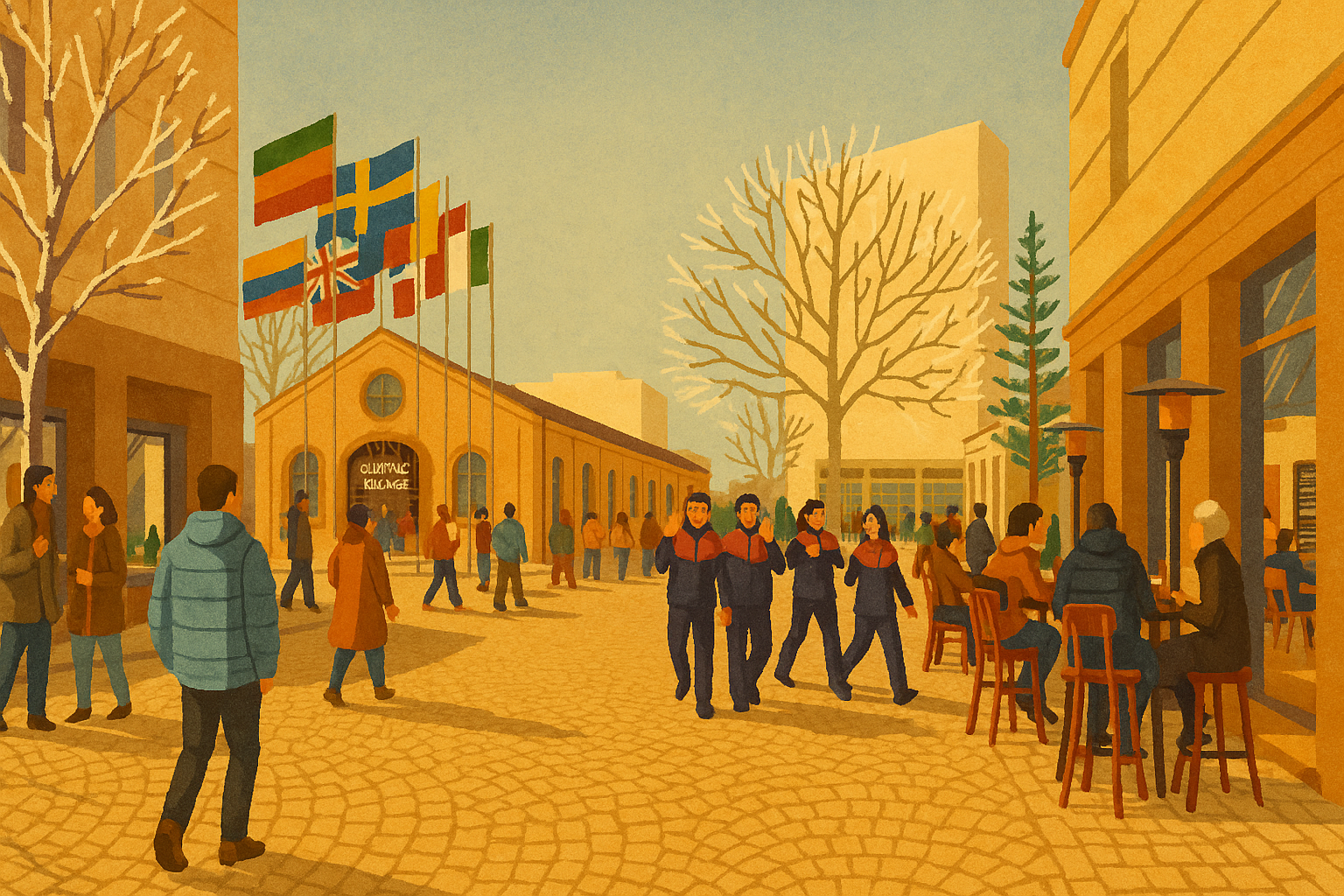
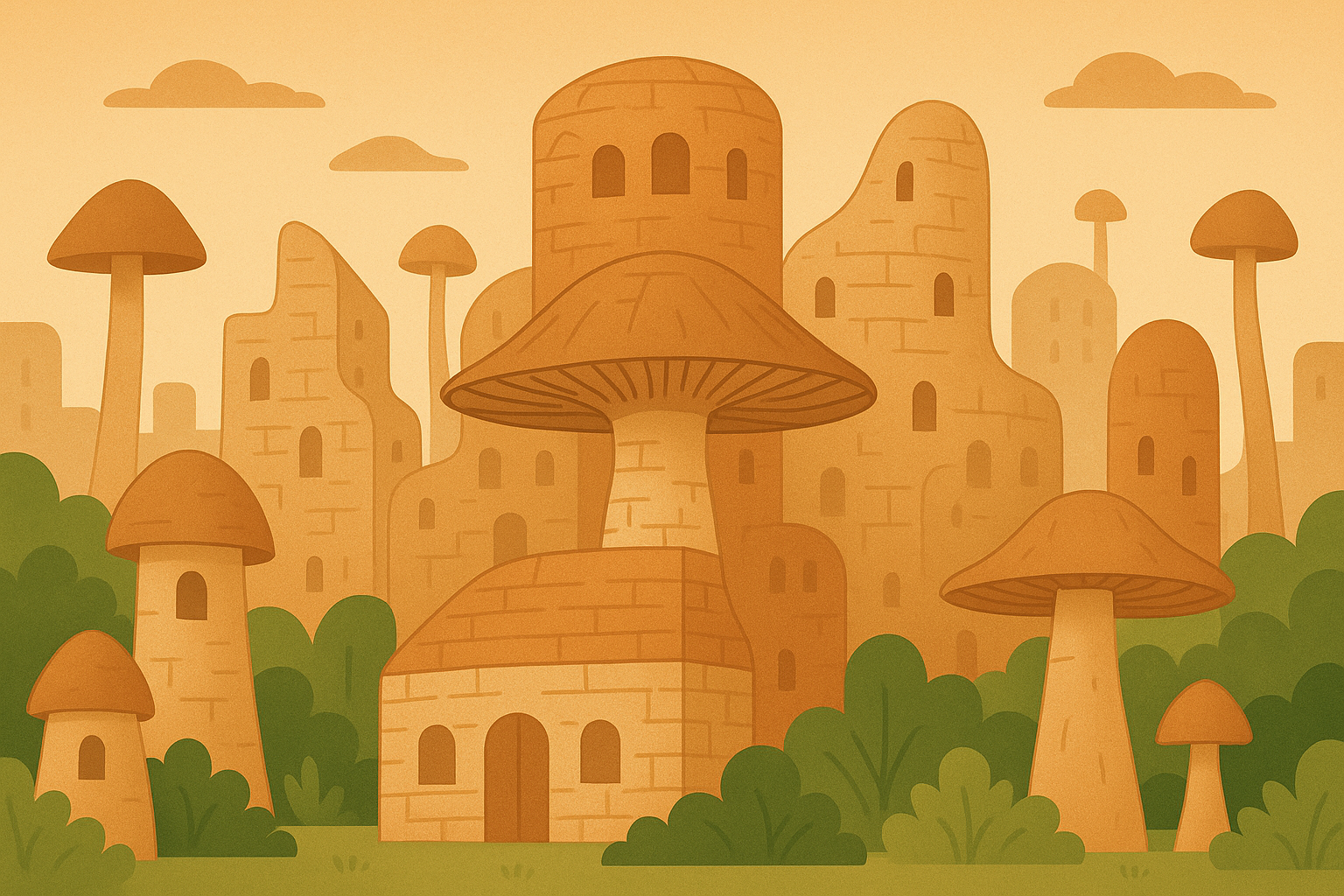

One Response
Excellent project! More people should be doing this kind of things, Mexico needs to be United with all the great things it have, Congratulations